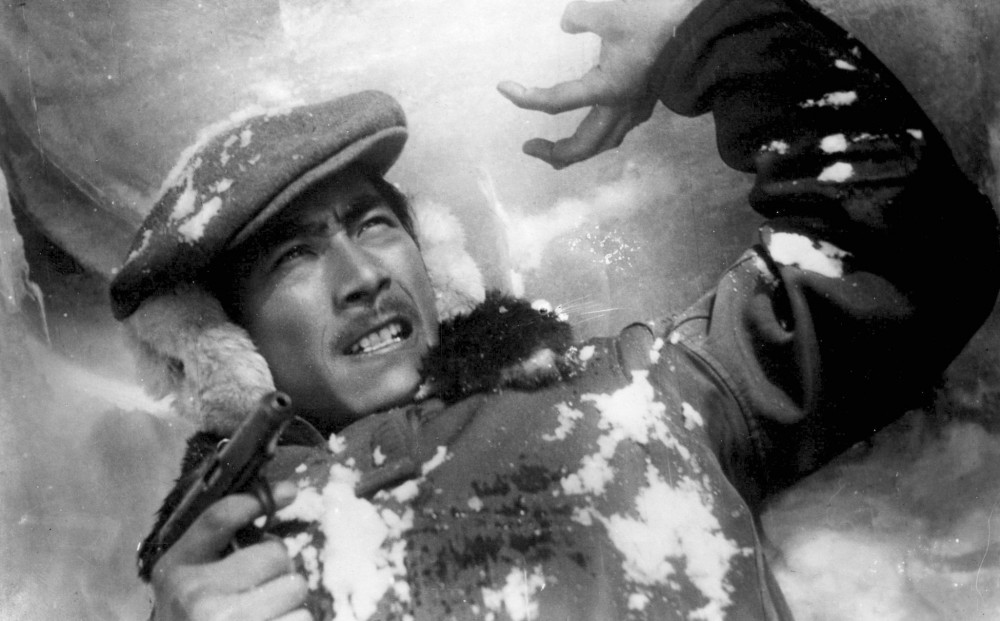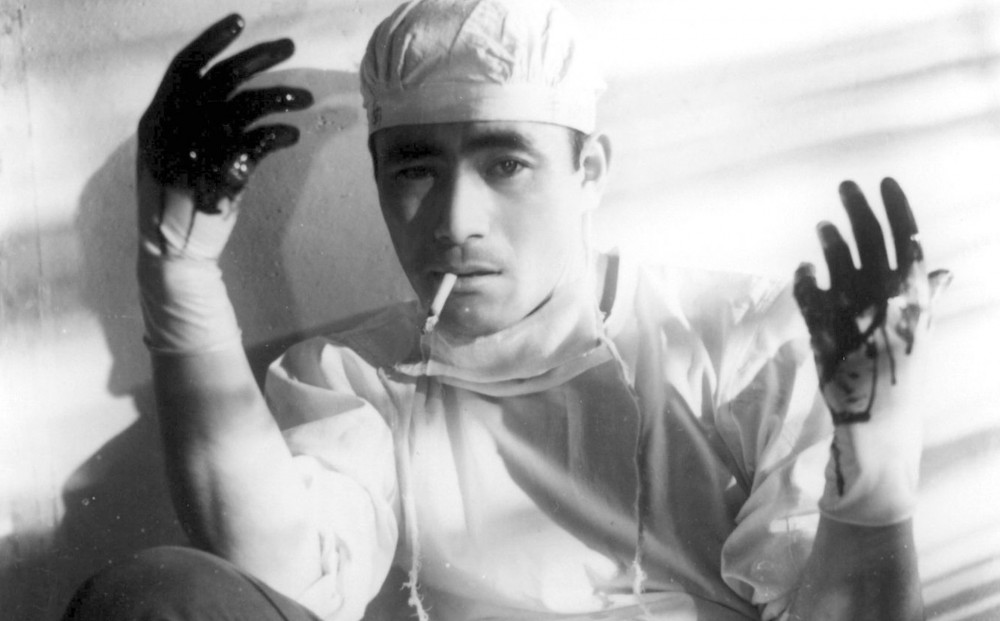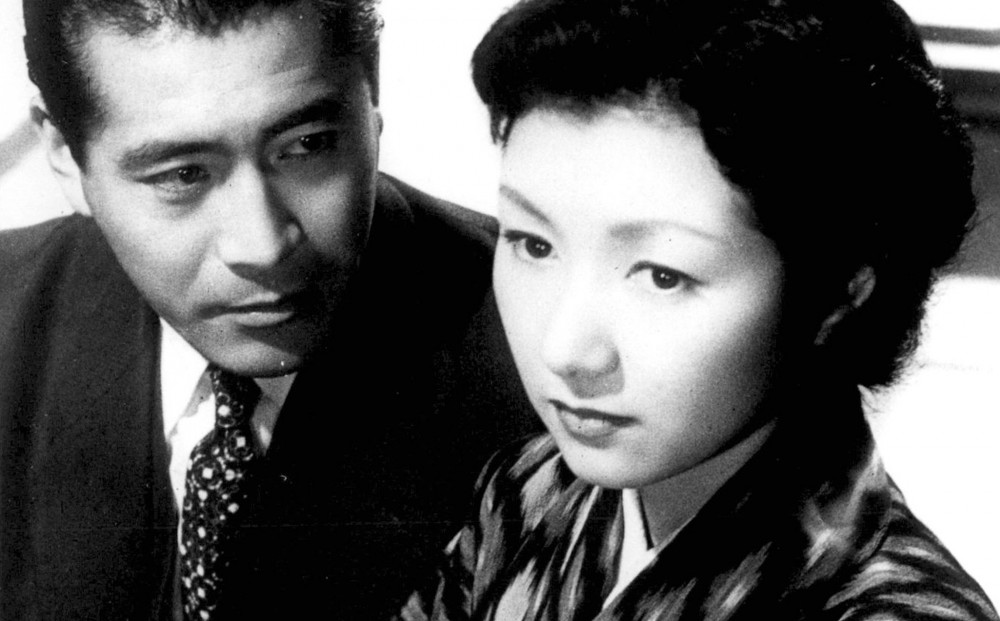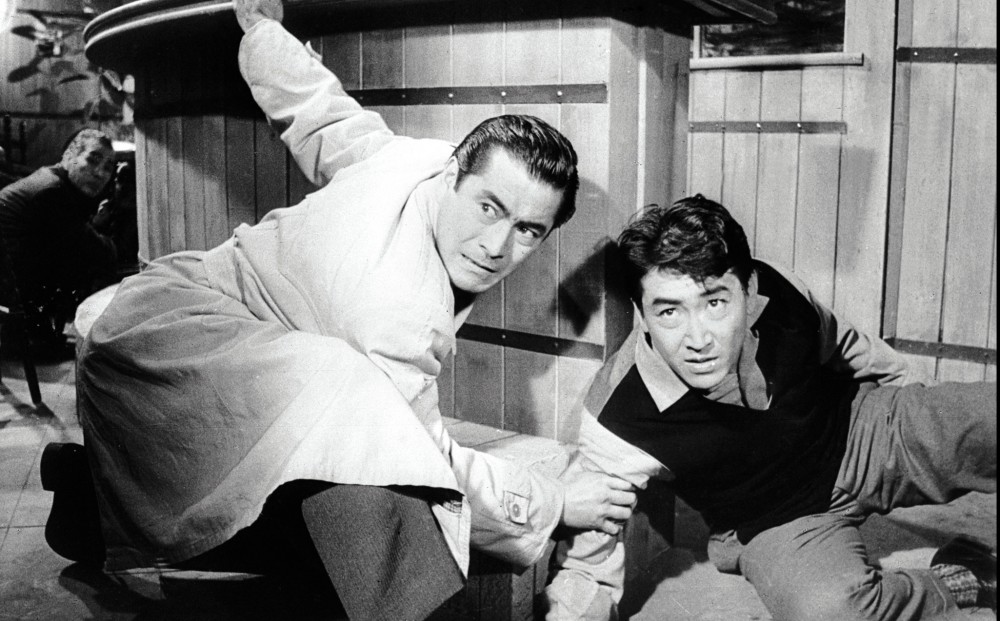When an actor appears in many films of a particular director it becomes a sort of short-hand subject to define either’s work. Sometimes it feels as if one influenced the other, or vice versa, but these collaborations end up becoming a large portion of the public’s knowledge about their prowess. One of the most emblematic of those collaborations is the Akira Kurosawa-Toshiro Mifune combo, maybe only rivaled by John Ford and John Wayne—probably not a coincidence.
But what lies beyond the confines of those classic Kurosawas? The Film Forum retrospective, now underway through March 10 and co-presented by Japan Foundation, brings 33 films showcasing the wide acting range of Toshiro Mifune. While it does contain the now-classic collaborations, it gives an opportunity to look beyond. Below, five of the least-known films from their series.
Snow Trail (Senkichi Taniguchi), 1947)

Toshiro Mifune’s first film has him top-billed alongside Takashi Nimura, who was already one of the most beloved actors of the nation’s post-war cinema. Here they’re in a trio of robbers hiding from the police after a big train heist. Their destination? Snowy mountains that look “like a row of shark teeth.” Feeling the hotel where they first holed up after being found out by an attentive employee, they have to fight the weather and avalanches to find a family-owned tourist chalet where they hide their identities once again. Mifune surprises in his first film by having a great counterpoint with Nimura, the old thief versus the new thief, the wise man versus the reckless youth. With gorgeous winter scenery and some truly incredible mountain climbing action, Snow Trail neatly draws lines between the nature of good and evil in the cold mountains.
The Quiet Duel (Akira Kurosawa, 1949)

We can’t avoid showcasing at least one by Kurosawa, so we chose his medical drama about a doctor who mishandles an operation with a man marred by then-uncurable syphilis, thus contracting it himself in the midst of World War II. Here Mifune shows the more stoic side of his acting prowess while embodying one of the key lines of the film: “misfortune makes people stubborn.” It’s devastating, the blank face with which he rejects his bride-to-be, or when he later smirks and shakes his head when revealing his secret to his father (also played by Takashi Nimura) with whom he runs a family clinic. Kurosawa makes a bleak portrait of post-war Japan, showing a generalized decline in morality, summarized by us seeing the doctor steal Salvarsan from his own medicine cabinet. Note: Rui, the nurse-turned-dancer played by Noriko Sengoku, steals the show as the representation of a postmodern, post-war woman in Japan.
A Wife’s Heart (Mikio Naruse, 1956)

From two lead roles we move to a bit part—commendable for an actor retrospective that tries to be as encompassing as this one. Mifune here plays Kinkichi, a bank clerk who approves the loan of the protagonist, Kiyoko (Hideko Takamine), and they find themselves spending time together, even though she’s married. The loan money is to build a café, that dream lovingly portrayed in a sequence in which—alongside her husband Shinji (Keiju Kobayashi)—they move around the empty lot they’ve secured, imagining where the counter will be and how many seats they’re going to need. The relation between Kinkichi and Kiyoko is subdued and played mostly in silent and beautiful moments, like an afternoon spent indoors as they wait for the rain to subside. As these sequences play in our head, the infatuation that Shinji believes his wife has been in is but a reflection of his own desires regarding a suicidal geisha he frequents. A quiet family drama with some excitement here and there.
The Last Gunfight (Kihachi Okamoto, 1960)

From black-and-white we move to color, and from dramas we move to action-crime comedies. From it first moments the film has an energy that permeates the whole endeavor: tilted cameras, fast editing, vibrant colors, references to The Great Train Robbery—all immediately set the tone of a city in chaos, ruled by crime. Mifune plays Fujioka, disgraced cop from Tokyo who’s been demoted and sent to Kojin. There the Oka gang and the Kozuka gang fight for dominance. The smug attitude of Fujioka, alongside his smiles and the way in which he finds himself always in trouble, is incredibly funny for a film that features as much shooting as Peckinpah. One can feel how Fujioka slowly builds a plan of mistrust, confusion, and treason as he infiltrates the Oka gang while trying to help a member of the Kozuka gang find justice. It’s just a lot of fun.
Hell in the Pacific (John Boorman, 1968)

Maybe the best-known film of these five, due to its Hollywood origin, this was a major-scale production—making its box-office failure even more spectacular. During World War II an American pilot (Lee Marvin) and a Japanese captain (Toshiro Mifune) find themselves on an abandoned island without much hope of rescue. What follows is an almost dialogue-less fight as they try to survive by their own means. It’s only about much fighting and almost childish bickering—at one point Lee Marvin urinates on Toshiro Mifune, almost like seeing two toddlers at a playground fight—that they realize they have to work together to survive and leave the island. While the message behind the film could be unfashionable (“war is bad, we’re all human beings after all”), the acting of both players is where it’s at; Mifune shows a range of emotions from cruelty, coldness, stoicism, smugness, and even sorrowful towards the end. A one-film showcase of his incredible performing talent.
Film Forum’s Toshiro Mifune retrospective is now underway through March 10. Explore more in our conversation on Mifune’s career on The B-Side with Moeko Fujii:
